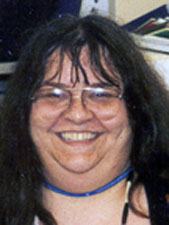Happy Birthday Ben
By Nancy Pope, Historian and Curator

Sunday was Ben Franklin’s 310th birthday. He was born on January 17, 1706 in Boston. While others may celebrate the man for flying a kite in a thunderstorm or advocating the turkey as a national symbol (1), the Postal Museum celebrates his many contributions to postal history while he served as postmaster general under both the British crown and the Continental Congress of the fledgling United States.
Franklin’s postal career began after he moved to Philadelphia. There, he caught the attention of Col. Spotswood, the British Postmaster General who was looking to replace Philadelphia’s current postmaster, Andrew Bradford. Spotswood named the 31-year-old Franklin to the post in 1737. His work impressed the British enough that in 1753 he was named co-Deputy Postmaster General with William Hunter. After a 1,600-mile inspection of post offices, he organized a weekly mail wagon between Philadelphia and Boston. Franklin's postal riders traveled day and night by horseback in relays, using lanterns to light their way.

Benjamin Franklin helped create the first rate chart used by colonial postmasters. The chart converted postage charges from British to colonial currency. Under Franklin, mail delivery time between cities was cut in half, making the colonial post both efficient for colonists and profitable for the Crown. But profits weren’t everything and Franklin’s revolutionary writings earned him a dismissal in 1774. Ben wasn’t out of a job for long. The very next year, the Continental Congress appointed him as postmaster general of the United Colonies at an annual salary of $1,000. Franklin’s duties to colonies took him elsewhere and he left postal work for good in 1776.
While we tend to think of Franklin as the nation’s first postmaster general, Samuel Osgood was the first postmaster general of the United States, appointed on September 26, 1789 by George Washington. Franklin’s position has long been celebrated on U.S. stamps, including the first stamps issued in 1847 (one depicted Franklin, the other Washington). He was even on one of the four stamps issued in 1993 celebrating the opening of the National Postal Museum!


(1) This myth rises from a letter from Franklin to his daughter commenting that the design of an eagle selected for use as the national symbol looked like a turkey. He followed that comment up with comparisons of each bird, “I am on this account not displeased that the Figure is not known as a Bald Eagle, but looks more like a Turkey. For the Truth the Turkey is in Comparison a much more respectable Bird, and withal a true original Native of America… He is besides, though a little vain & silly, a Bird of Courage, and would not hesitate to attack a Grenadier of the British Guards who should presume to invade his Farm Yard with a red Coat on.”

About the Author
The late Nancy A. Pope, a Smithsonian Institution curator and founding historian of the National Postal Museum, worked with the items in this collection since joining the Smithsonian Institution in 1984. In 1993 she curated the opening exhibitions for the National Postal Museum. Since then, she curated several additional exhibitions. Nancy led the project team that built the National Postal Museum's first website in 2002. She also created the museum's earliest social media presence in 2007.
